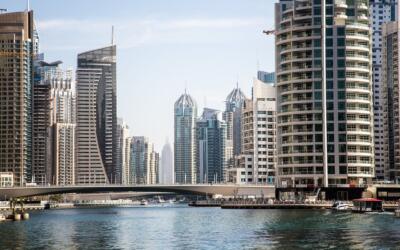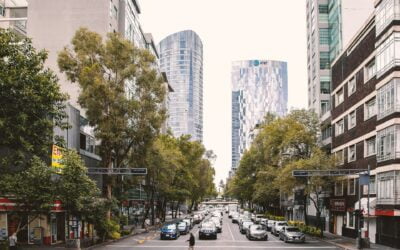Mallorca, also known as Majorca, is one of Spain’s most interesting places to visit. In 2022, Spain was ranked fourth in the list of major tourist destinations worldwide after the US, UK, and Switzerland.
Table of Contents
- 1 What makes Mallorca a popular tourist destination?
- 2 Visa application
- 3 Cost of living and cost of living arbitrage
- 4 Crypto community
- 5 Size of the ex-pat community in Mallorca
- 6 Popular recreational activities and fun spots in Mallorca
- 7 Transportation in Mallorca
- 8 Safety
- 9 Cultural and social norms
- 10 Political and economic stability in Mallorca
- 11 Language and language barriers
- 12 Healthcare in Mallorca
- 13 Electronic standards
- 14 Telephone and Internet plans
- 15 Payment service and infrastructure
- 16 Climate and Seasons
- 17 Cuisines in Mallorca
- 18 Tax requirements on digital nomads
- 19 Common concerns about Mallorca
And Mallorca is among Spain’s most visited places. Mallorca is the largest of the Balearic Islands and the 7th largest island in the Mediterranean Sea. Other major islands in the Balearics are Formentera, Ibiza, and Menorca. Mallorca’s capital is Palma, also the Balearic Islands’ capital.
According to Macrotrends, the island has a population of around 480,000 and annual growth of 0.63%. The Balearic Islands received 16, 475,579 tourists in 2022, according to Majorca Daily Bulletin, a news source.

According to the same source, in 2022, the Balearic Islands hosted 220,017 expats. The high traffic to the islands is large because they provide a favourable environment for ex-pats to live and work.
What makes Mallorca a popular tourist destination?
Mallorca has several exciting attractions to offer visitors. Some of the things making Mallorca a popular tourist destination are:
1. Beaches
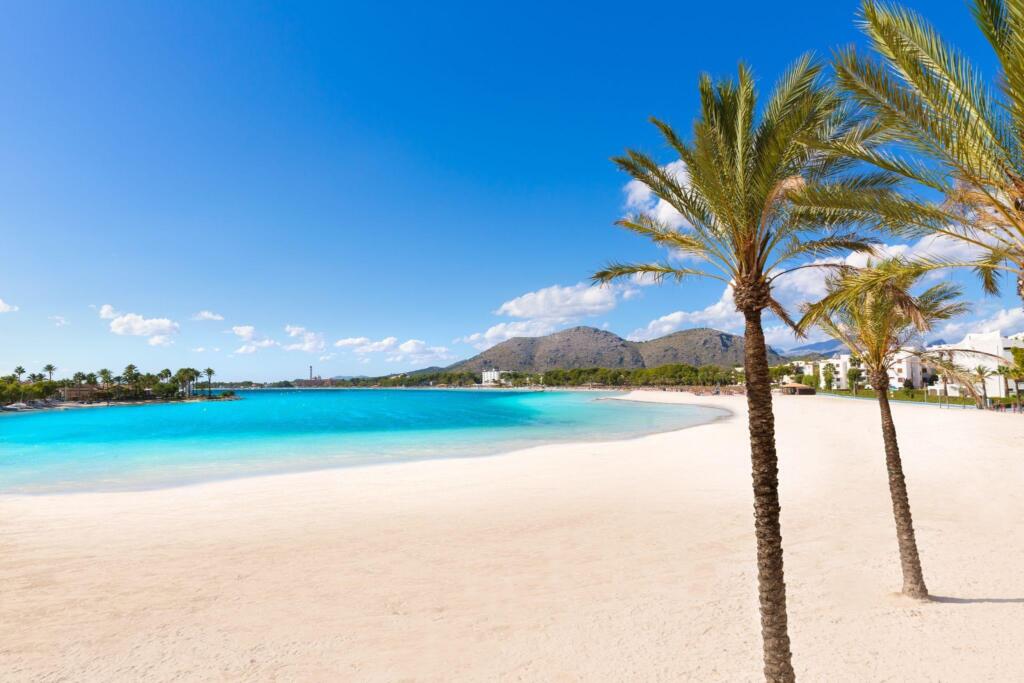
Of the many tourist attractions in Mallorca, beaches are the most popular. The island has 262 beautiful beaches. These beaches include Alcudia Beach, Cala Mondrago Beach, Sa Calobra Beach, Cala Banyalbufar, and Calo des Moro.
Alcudia Beach is the most popular due to its clean white sand and elegant scenery.
2. Art events
Summer seasons in Mallorca are the peak event time. One popular event is the Artdemossa. This event showcases art from paintings to sculptures to photography, artisan displays, and musical performances.
Another popular event is the Deia International Music Festival which hosts local and international artists.
3. Remarkable sights in Palma
Palma, the capital of Mallorca, has inviting sights such as the Cathedral of Santa Maria, a Gothic Roman Catholic Church. Also known as La Seu, the construction of this cathedral lasted 400 years.
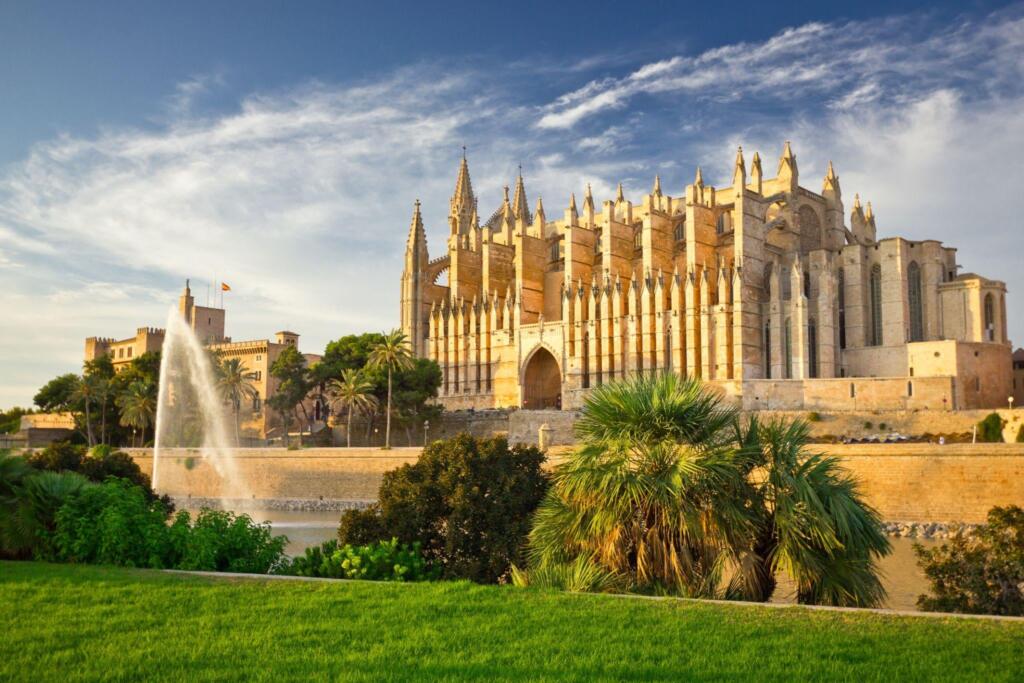
Other architectural amazements in Palma, Mallorca include El Aguila and Can Forteza Rey, beautiful modernist buildings. There is also Bellver Castle and the Museum of Mallorca, a museum for displaying and preserving remnants of medieval Jewish culture.
4. Picturesque villages
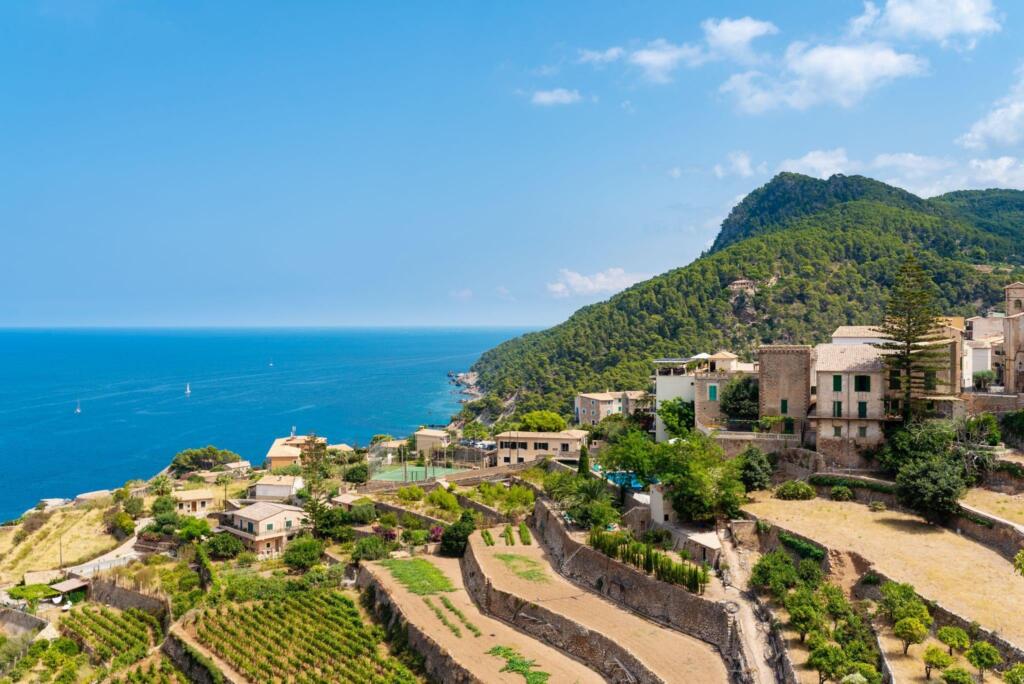
Mallorca has numerous picturesque villages that have become huge tourist attractions. These villages include Banyalbufar, Soller, and Valldemossa. Valldemossa, located only 20 minutes from Palma, is the most popular of the picturesque villages on the island. It is in particular known for the Carthusian monastery, where Frederic Chopin, the 19th-century global renown Polish composer, stayed at one time in his life.
5. Party hotspot
Mallorca is a party hotspot thanks to the numerous great party locations available on the island. These hotspots include Magaluf, Palma, Santa Catalina, and Paseo Maritimo.
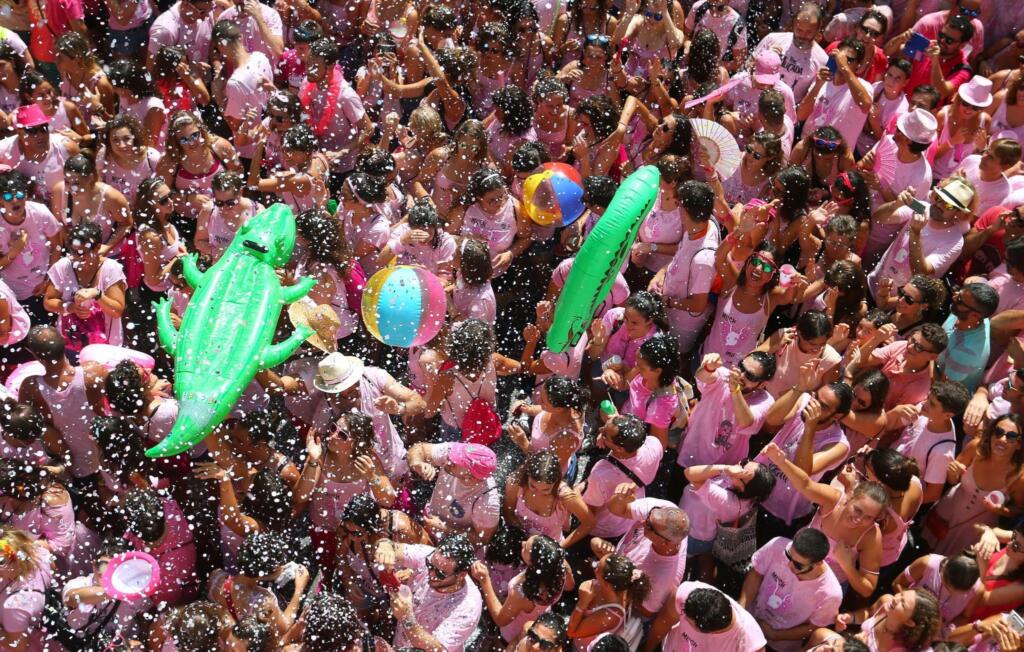
Magaluf, in particular, is a resort town famous for hosting music events. It has numerous local and international nightclubs that engage crowd-pulling DJs and artists.
Visa application
If you plan to travel to Mallorca, depending on where you are coming from, you may first need to get a visa. Spain has two main types of visas, the Schengen Visa (the short-stay visa) and the long-stay visa. A Schengen Visa allows travelers to travel and stay in any Schengen state for a short period, usually 90 days.

You are eligible to apply for Schengen Visa if:
- You are from a third-world country whose nationals need to obtain a Schengen Visa to enter Schengen states.
- You were previously rejected from entering a Schengen State. Also, you must be from a third-world country with a free-visa movement agreement with the Schengen states.
Citizens of many countries, however, don’t need the Schengen Visa to enter Spain for Short Stays. Click here to find out the countries exempted from the visa requirement.
On the other hand, a long-stay visa allows you to stay in Spain for more than six months (180 days). Nationals from certain countries are exempt from applying for long-stay Spain visas. The list includes Switzerland, Iceland, Norway, and Liechtenstein.
The following table shows the different types of Spain visas depending on the reason for travel:
| Visa type | Reason for application |
| Visitor visa | Visiting friends and family members |
| Tourist visa | Visiting for holidays and sightseeing |
| Study visa | Studying at Spain’s educational institutions |
| Business visa | Attending business activities |
| Cultural, Sports, and film crew visa | Visit Spain for sports, filming, and cultural-related activities |
| Official visit visa | For official trips to Spain |
| Transit visa | To enable passage through Spain to a non-Schengen state |
Visa available for digital nomads
Spain’s digital nomad visa was introduced in January 2023. This visa allows non-EU nationals to live and work from the county for up to five years.
For eligibility, a non-EU national has to be working remotely but for a non-Spanish company or enterprise. Freelancers with multiple clients are eligible, but their Spanish clients shouldn’t contribute more than 20% of their earnings.
The process of applying for the digital nomad visa
You can apply for a digital nomad visa through a consulate or a Spanish embassy in your country of residence. Alternatively, you can enter Spain through a tourist visa and apply for the digital nomad visa within the first three months of your stay.
The steps for applying for this visa are as follows;
- Fill out the application form
- Submit the required documents
- Arrange an interview
- Attend the interview
- Pay the visa fees.
To apply for the Spain digital nomad visa online, click here.
Requirements to qualify for the digital nomad visa
You must meet the following requirements to qualify for Spain’s digital nomad visa;
- You must not be living in Spain illegally during your application. Also, you must not have resided in Spain within the five years prior to your application.
- Provide proof of working with a firm or client(s) for at least three months before the application. Also, this firm(s) must have been operational for more than a year.
- Freelancers should provide proof of regular revenue from non-Spanish clientele.
- Have the ability to demonstrate experience or qualification in your field of work. At least three years of work experience can suffice if you lack professional certificates or a university degree.
- Proof of a self-sufficient income through contracts, invoices, or bank statements. The income should be at least 200% of Spain’s monthly minimum wage (EUR 2,334).
- Have health insurance cover.
- Proof of a clean criminal record in the last five years in Spain or other countries of residence before the application.
- A copy of your passport
- Proof of payment for the administrative fees
The cost of visa application
The fees charged for various visa applications are as follows;
- Digital nomad visa – around EUR 75. Plus, EUR 15 for a residency card after the visa application approval.
- Short-stay visa – Adult travelers pay around EUR 80. Children between 6-12 years pay around EUR 40, and free for children below six years.
- Long-Stay visa – costs around EUR 80.
Difficulty in visa application
Spain’s visa application process is simple. Usually, it takes about 15 business days. Some exceptional situations can cause an extension of processing time to 30 days or even 60 days. The situation includes Spain’s consulate or embassy needing to consult with other embassies of Schengen states.
Cost of living and cost of living arbitrage

According to Numbeo, a site that tracks the cost of living around the world, the average monthly living cost for a single person in Mallorca without rent is EUR 769.3. A family of four requires an average of EUR 2,651.6, excluding rent. Rent prices in Mallorca are 75.3% lower than in New York.
Also, spending USD 9,100 in New York City is similar to spending USD 3,828.6 (EUR 3,513.7) in Mallorca, assuming you rent in both cities.
Food cost
While staying in Mallorca, depending on your budget and lifestyle needs, you can eat out, there are many nice restaurants to choose from. You can also shop in the local stores and cook your food.
Prices at restaurants
Based on data from the Numbeo, here is a price summary of some items in Majorcan restaurants compared to those in New York.
| Product | Mallorca | New York | Cost difference |
| Meal at an inexpensive restaurant | EUR 12.50 | EUR 22.94 | -45.5% |
| Meal for two at midrange restaurants | EUR 60 | EUR 91.77 | -34.6% |
| McDonald’s McMeal | EUR 9.00 | EUR 11.00 | -18.3% |
| Regular cappuccino | EUR 2.24 | EUR 4.88 | -54.0% |
| Imported beer (300 ml) | EUR 3.50 | EUR 9.18 | -61.9% |
| Domestic beer (500 ml) | EUR 3.00 | EUR 7.34 | -59.1% |
Prices of common foodstuffs
Regarding common foodstuffs, the following is a summary of consumer prices in Mallorca compared to New York based on the Numbeo survey.
| Foodstuffs | Mallorca | New York | Cost difference |
| Regular milk (1 liter) | EUR 0.96 | EUR 1.16 | -17.5% |
| White Bread (500g) | EUR 0.97 | EUR 3.88 | -75.1% |
| Regular eggs (1 tray) | EUR 2.57 | EUR 4.54 | -43.4% |
| White rice (1kg) | EUR 1.67 | EUR 7.61 | -78.0% |
| Chicken fillets (1kg) | EUR 6.76 | EUR 15.18 | -55.5% |
| Apples (1kg) | EUR 1.93 | EUR 5.34 | -63.8% |
| Local cheese (1kg) | EUR 11.43 | EUR 16.62 | -31.2% |
| Bananas (1kg) | EUR 2.17 | EUR 2.10 | +3.2% |
| Tomatoes (1kg) | EUR 2.21 | EUR 5.76 | -61.6% |
| Onions (1kg) | EUR 1.42 | EUR 3.27 | -56.4% |
Accommodation

Accommodation options in Mallorca include Airbnb, hotels, studio apartments, and co-living spaces.
According to data from Nomadlist, the average cost of staying a night in an Airbnb is USD 166 (EUR 152.2). On average, staying in an Airbnb for a month will cost around USD 5,059 (EUR 4,637.8).
If you decide to stay in a hotel, it will cost around USD 55 (EUR 50.42) per night and about USD 1,165 (EUR 1,068) monthly.
Meanwhile, renting a one-bedroom studio apartment will cost you an average of USD 920 (EUR 844.44) monthly.
Mallorca also has a variety of co-living spaces you can stay and work from. On average, these co-living spaces cost around USD 1,500 monthly. Most have the necessary amenities to ensure conducive living and working.
Some of these amenities are;
- Chill out areas
- High-speed Wi-Fi
- Meeting rooms
- Skype rooms
- Washers
- Air conditioning systems
- Parking lots
- Workspaces
- Cleaning rooms
- Dining areas
- Spacious bedrooms
Best neighborhoods to live in Mallorca
As a digital nomad, there are many areas you can live in Mallorca, and they include the following:
1. Soller
Located west of Mallorca, Soller is only a 30-minute drive from Palma. Soller gets its name from the many orange and lemon groves grown in the area. This neighborhood is popular among tourists due to its remarkable views and quiet atmosphere. It also has a village vibe.
While in Soller, you can take an old tram and navigate Puerto de Soller, a neighboring town and harbor. Puerto de Soller is home to two beaches and a Marina. The marina serves fishing boats and luxury yachts.
Despite having a quiet and relaxing atmosphere, Soller is also a busy business area. Businesses here range from shops to restaurants to small bars to cafes.
In addition, you get to enjoy beautiful sunsets thanks to Soller’s western location.
According to data from booking.com, some of the best accommodation options in Soller include;
- Can Veri Suites
- Beach Apartment Montemar No.1
- Can Domingo
- YourHouse Es Niu Apartment
- Casa Carrer de Bonany
2. Bendinat
Located in the southwest of Palma, Bendinat is a quiet and exquisite area close to golf, nature, and the sea. If you are looking for an area close to nature, quiet, and still close to the city, Bendinat is the go-to neighborhood.
Even better, it is one of Mallorca’s most exclusive and popular residential areas. Here there is a range of accommodation options, from luxury apartments to villas with stunning surroundings.
Besides the beautiful surrounding scenery and privacy, you also get close access to areas like Palma, Puerto Portals, and Illetas. Illetas has beautiful beaches, while Puerto Portals is vibrant with unique shops and yachts.
Additionally, Bendinat is home to some of Spain’s most popular golf clubs. It has an 18-hole golf course where you can enjoy the sport. Also, it has grocery stores, medical centers, gyms, cafes, and restaurants.
Some of the best accommodation options to host you during your stay in Bendinat are:
- Be live Adults Only Marivent INSiDE
- Hotel Bendinat
- Portal Hills Boutique Hotel
- Leonardo Boutique Hotel
3. Santa Catalina
Located 1.8 km west of Palma, Santa Catalina is one of the most appealing neighborhoods in Mallorca. This neighborhood has a village ambiance combining characteristics of contemporary and old lifestyles. While in Santa Catalina, you are close to Palma and the luxurious yachts and nightclubs in Paseo Maritimo.
Santa Catalina is home to the popular food market, Mercat de Santa Catalina. In this market, you can find fresh fish and groceries like vegetables, fruits, and spices. You can also buy freshly ready-to-eat dishes in the market.
During the day, the streets are quiet, and you can enjoy the artistic atmosphere of the area. In addition, you can find designer studios, clothing boutiques, nightclubs, yoga studios, massage parlors, and bakeries along the streets.
At night the streets are busy and crowded with people hopping between nightclubs and restaurants.
Accommodations are also plenty in Santa Catalina. The list to choose from includes:
- Bordoy Continental Palma
- Urban hostel Palma
- StayCatalina Boutique Hotel
- Casa Catalina,
- Bonita Casa Sa Font.
Other popular neighborhoods in Mallorca are;
- Molinar
- Portixol
- Ciudad Jardin
- Calatrava
- Jonquet
- Son Espanyolet
- Plaza Espana
- Old Town Central
- Palma City Beach
Utilities
While staying in a studio apartment in Mallorca, you will likely pay for house utilities. These might include heating and air conditioning, garbage collection, water, and electricity. According to Numbeo.com, an average monthly utility fee on the island is EUR 188.93 for an 85 sqm studio apartment.
Meanwhile, a one-minute prepaid mobile tariff will cost an average of EUR 0.27.
Internet
A monthly internet plan of 60 Mbps will likely cost you EUR 39.89 on average.
Palma has superb internet connectivity with an average fixed download speed of 180.96 Mbps and an average upload speed of 101.57 Mbps.
Best coworking spaces in Mallorca
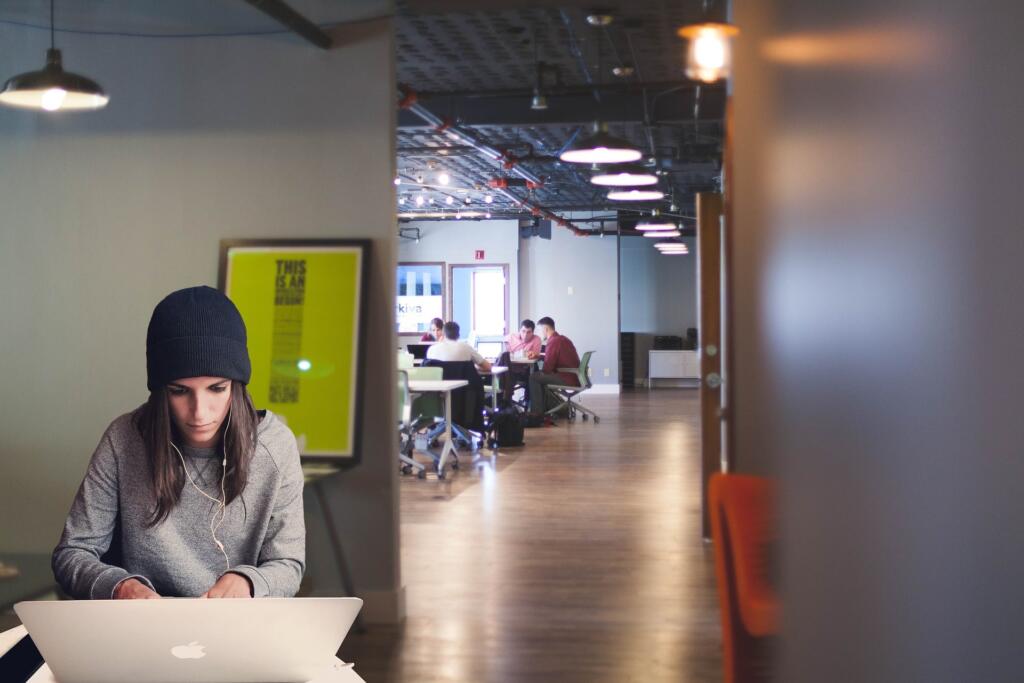
Mallorca has magnificent coworking spaces to provide a favorable working environment for digital nomads and remote workers.
Some of these coworking spaces include:
1. The Hub
Located in the heart of Santa Catalina, The Hub gives its members a great space to connect, work and thrive. The Hub welcomes everyone, from those who want to connect with like-minded people to those who want to launch their businesses. Even better, it holds workshops and events to boost networking and teach skills.
This coworking space provides a flexible membership arrangement, whether flexi-time or full-time. It is open from 9 a.m. to 6 p.m., Monday to Friday.
Its memberships plans include;
- Private office – EUR 1350 monthly
- Dedicated desks – EUR 180 monthly per person
- Hot desks – EUR 20 daily, EUR 90 weekly, or EUR 153 monthly
Some essential amenities within this space are;
- High-speed Wi-Fi
- A chill-out area
- Heating and air conditioning
- Phone booth
- Personal lockers
- Ergonomic chairs
- Printer, photocopier, and scanners
- Parking space.
2. Coworking Mallorca
Coworking Mallorca is a creative and modern workspace located in Playa de Palma. This coworking space is conducive to online or physical meetings or private work.
Coworking Mallorca opens every day, from 08:30 a.m. to 6:00 p.m., all year round.
Regarding payment plans, Coworking Mallorca has a smart concept called pay-as-you-use. This concept means you only pay for services you may need instead of paying for regular membership or subscription.
The rates for accessing this coworking space are as follows;
- EUR 5 per hour
- EUR 20 per day
For improved productivity, this coworking space has amenities like;
- High-speed Wi-Fi
- Printers, photocopiers, and scanners
- Soundproof phone booth
- Coffee Lounge
- Ergonomic chairs
- Free parking spaces
3. Comodo&Co
Comodo&Co has three coworking spaces in the heart of Palma. These locations are Via Roma, La Rambla, and Arxiduc Lluís Salvador. These coworking spaces offer members a creative working environment to perform their tasks, whether in meetings or individual work.
Some services by Comodo&Co coworking spaces are;
- Meeting rooms
- Hot desks
- Private cubicles
- Event spaces
- Serviced offices.
On top of that, Comodo&Co has a community of entrepreneurs, creatives, and small businesses to facilitate easy networking.
These coworking spaces provide 24/7 accessibility all around the year. They offer two types of membership plans. These plans are;
- Virtual membership – from EUR 30 monthly
- Fixed memberships – from EUR 95 monthly
Other coworking spaces in Mallorca are;
- Palmapolitan
- Moasis Cowork Mallorca
- Where to Work Coworking
- Coworking PalmaActiva
- BingBang Coworking
- Nidus
- Working Tecnics
Crypto community

The Spanish government has been relatively accommodating to crypto.
Data from triple-a.io indicate that over 2.51% of Spain’s population, 1.1 million, owned cryptocurrencies in 2021. As many as 215 crypto Automated Teller Machines are installed in different cities.
Mallorca has been home to an active crypto community. Numerous crypto events have been hosted on the island over the years. One popular crypto event that has taken place annually on the island since 2019 is the Mallorca Blockchain Days.
Crypto taxation
The government of Spain considers crypto as an asset. So any gains/losses derived from selling or disposing of crypto for fiat or other crypto are taxable. Additionally, the government considers crypto transaction fees as part of the cost of selling or acquiring crypto.
Usually, capital gain taxes range from 19% to 26%, depending on the amount of crypto profit. Here is a summary of tax rates for different amounts of capital gains.
| Capital gains (EUR) | Tax rates |
| 0 – 6,000 | 19% |
| > 6,000 – 50,000 | 21% |
| > 50,000 – 200,000 | 23% |
| > 200,000 | 26% |
Crypto ATMs in Mallorca
So far, Mallorca only has 14 crypto ATMs. Some of these crypto ATMs are;
| Operator | Location | Crypto supported |
| Kurant | Carrer de Marbella, Palma | Bitcoin, Bitcoin Cash, Ether, Litecoin |
| Kurant | Alcampo Mallorca, Palma | Bitcoin, Bitcoin Cash, Ether, Litecoin |
| Kurant | Calle Valencia, Santa Ponsa | Bitcoin, Bitcoin Cash, Ether, Litecoin |
| Kurant | Camino de Son Rapinya, Palma | Bitcoin, Bitcoin Cash, Ether, Litecoin |
| Shitcoins Club | Carrer General Ricardo Ortega, Palma | Bitcoin, Bitcoin Cash, Ether, Litecoin, Dash, Tether |
| Shitcoins Club | Avenida Gabriel Roca, Palma | Bitcoin, Ether, Litecoin, Dash, Tether |
| BitBase | Aeropuerto, Palma | Bitcoin, Bitcoin Cash, Ether, Litecoin, Ripple, Tether |
| BitBase | Carrer del Cardenal, Palma | Bitcoin, Bitcoin Cash, Ether, Litecoin, Ripple |
| CoinUnited | Carrer de Colom, Palma | Bitcoin |
| GBTC Finance | Carrer Hug de Ribesaltes, Palma | Bitcoin, Bitcoin Cash, Ether, Litecoin, Dogecoin, Dash, Zcash, Monero |
Size of the ex-pat community in Mallorca
According to 2021 data from National Statistics Institute (NSI), the public agency that collects statistics, Balearics had 220,297 foreigners. These foreigners comprised 29,063 Moroccans, 21,326 Italians, 18,222 Germans, 13,731 Colombians, and 5,902 Chinese. This comprised 21.8% of the population in the Balearic Islands.
Local nomad opportunity
As stated above, a digital nomad visa allows you to live and work in Spain, but you can only earn up to 20% of your income from Spanish firms.
Visit some of Spain’s popular job websites to find firms looking for employees in Mallorca. These job websites include Monster, Infojobs, Trabajos, Talent Search People, and Turijobs.
Also, you can try out other international job platforms like Fiverr, LinkedIn, Upwork, and Freelancer.
Popular recreational activities and fun spots in Mallorca
Mallorca Island is home to numerous fun spots where you can engage in various recreational activities. Some of the best fun spots to visit and activities to enjoy in Mallorca include:
1. Rafa Nadal Museum
Located in Rafael Nadal’s residence, Rafa Nadal Museum is one of a kind. This Museum is an exhibition space for the major career highlights of the professional tennis player Rafael Nadal. If you are a sports enthusiast, this is the go-to spot for fun and sports knowledge.
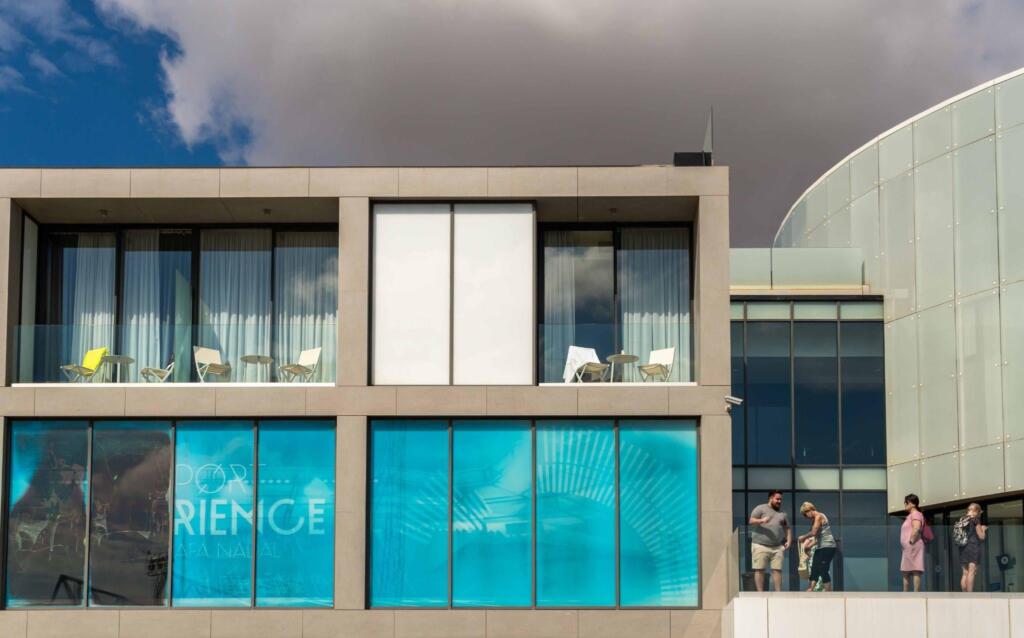
Besides having a brief history of the tennis player, you also enjoy objects and memories of other great athletes. These athletes include Pau Gasol, Christiano Ronaldo, Tiger Woods, Michael Jordan, Roger Federer, Serena Gomez, and Usain Bolt.
In addition, this facility offers a technological and playful environment for visitors to compete virtually with sports figures. This audio-visual experience is ideal for everyone from families to businesses to friends.
Admission tickets cost starts from USD 19.96 (EUR 18.15) per person.
2. Jet ski experience

Jet skiing is one of the many waters recreational activities you can enjoy in the ports of Mallorca. Head to Mallorca’s vast harbor to experience this adventure. Here you can rent a jet ski to cruise in the Mediterranean waters, even without a license.
One major destination for skiers is Los Deltas, a natural reserve with crystalline waters, caves, and cliffs, a wonderful sight to take memorable pictures of. Other major destinations on a jet ski are Cala Vella, Son Veri, and Cap Rocat.
However, at least 16 years old individuals can drive a jet ski. Passengers can be as young as five years old but with a company of a legal tutor or an adult. For safety, tutors provide lifejackets on site. Also, remember to carry some water clothes, sunscreen, and sunglasses for comfort.
Some major jet ski organizing parties at the harbor are Mallorca on Jetski, Port Calanova, and Portals on Jetski. Depending on the organizers, the cost of this recreational activity and trip duration may vary.
3. Hot air balloon flight
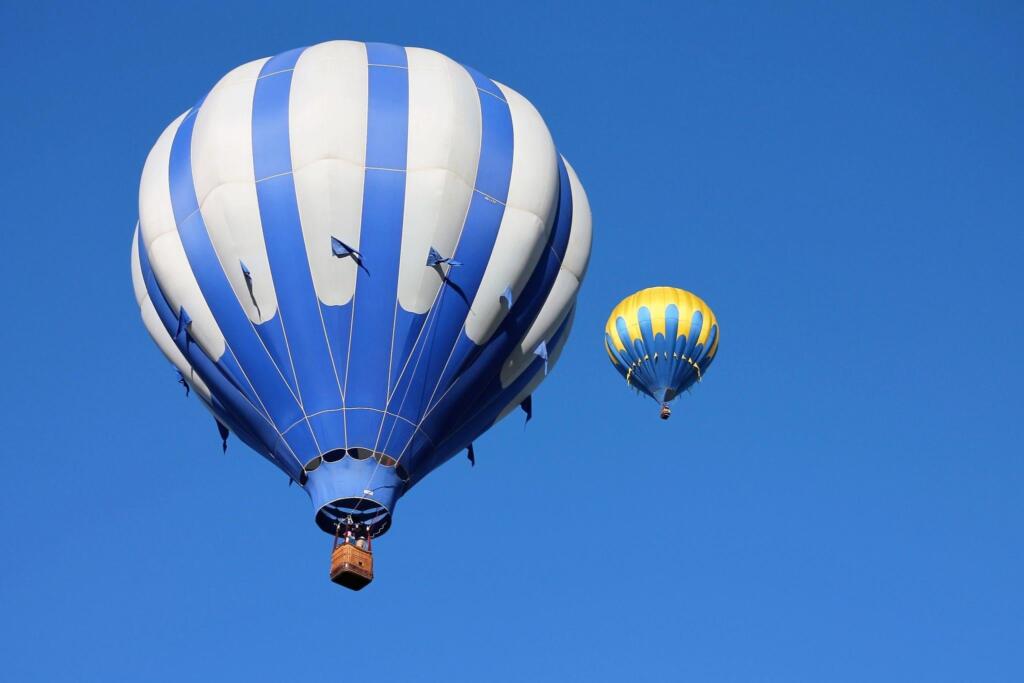
If you want to discover Mallorca from above the skies, head to Manacor and try a hot air balloon experience. This experience is open to everyone, meaning you can bring your friends and family to enjoy the remarkable views.
The team can offers exquisite and quality treatment for your money. Most of the flight baskets are spacious, and you can sip a glass of champagne while onboard.
While 100m above the ground, some breathtaking views you will likely come across include the Mediterranean Sea, the Mallorca villages, the Tramuntana mountains, and even the rugged coastline of Mallorca.
Flights take place from 7 a.m. to 8 p.m. Also, every trip lasts for one hour. This cost for experience starts from USD 202 (EUR 183.29) per person.
Other fascinating experiences you can enjoy while in Mallorca include;
- Yacht cruising around Mallorca
- Quad biking
- Coasteering in Alcudia
- Sea caving in Cova des Coloms
- Visit Palma Aquarium and 3D Cinema Aqua dome
- Boat trip to Caves of Drach
- Cliff Jumping
- Enjoy a buggy discovery tour in Cala Millor
- Go on a catamaran tour from Puerto de Alcudia
- Segway offroad riding
- Wine, cheese tasting, and horse riding
Transportation in Mallorca
Mallorca Island has a well-established transport system. This system includes airports, roads, railways, bicycles, and water transportation.
Air transport
Mallorca has one international airport located 5 miles (8 Km) from Palma, the Son Sant Joan Airport, also known as Palma de Mallorca Airport. This airport is a relatively busy one and hosts over 25 airlines that travel over 100 routes. In 2022, it served 28, 573,364 passengers. In December alone, 936,327 passengers used the airport.
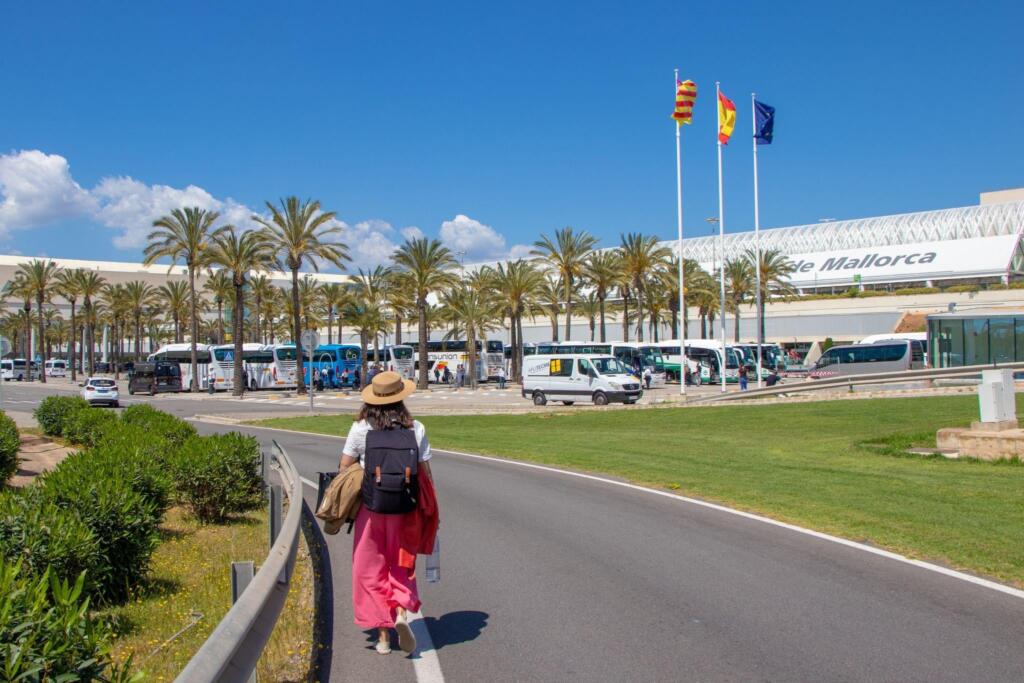
Son Bonet Aerodrome is another airport located in Marratxi municipality, 5.5 km northeast of Palma. Constructed in the 1920s, the airport serves both the military and civilians. In 1946, the airport opened its doors to international and domestic flights.
However, as passengers increased, the airport needed more facilities and space to accommodate larger aircraft. So, in 1959, the airport transferred its services to the main airport, Palma de Mallorca Airport.
The airport serves around 75,000 passengers annually for general and leisure aviation activities.
Railway transport
The Majorcan railway network is small and consists of three lines, T1, T2, and T3. These lines radiate east and north from Palma. The main line, T1, originates from Palma and passes through Inca to Sa Pobla and Manacor. The other two lines, T2 and T3, serve a metro system in Palma and the surroundings.
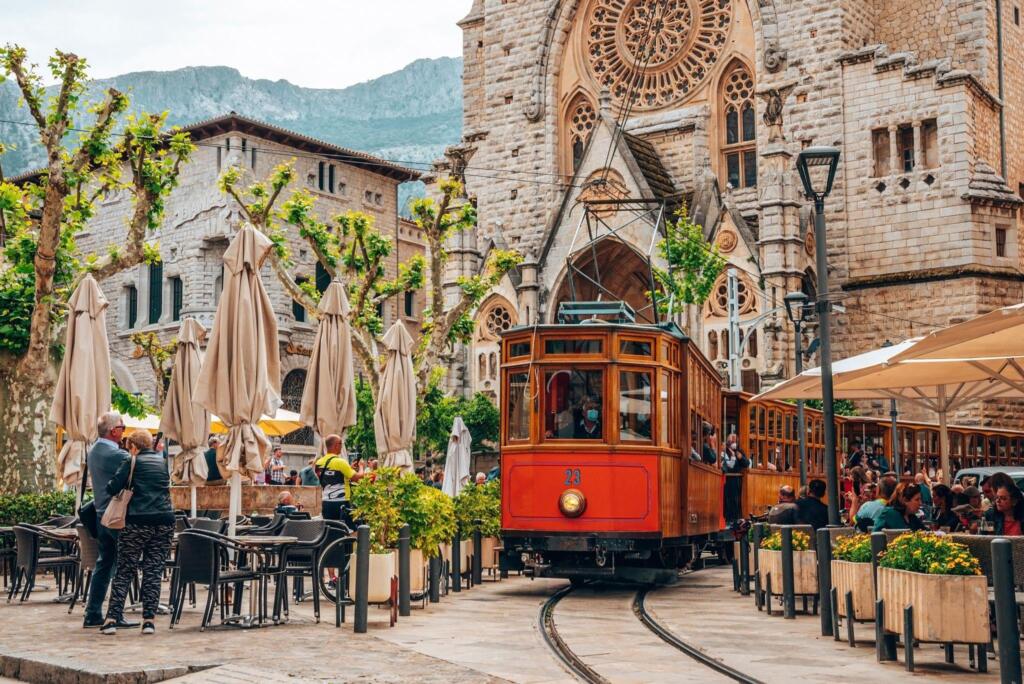
This railway system has a total of 22 stops. However, none of these stops correspond with the main tourist destinations. Therefore you might need to use another means of transport to your destination.
Usually, train tickets cost from EUR 1.80 to EUR 5.40. You can get your tickets from the Intermodal Station ticket office or automatic ticket machines within the stations.
Apart from the main electrical railway system, Mallorca also has an old train system known as the Soller Vintage Train or Orange Express. The Soller Vintage Train, made of mahogany and brass, started operations in 1912.
Although it’s not the fastest transport mode from Palma to Soller, it offers an unforgettable experience filled with scenic views. Tickets for boarding this train costs from EUR 18 to EUR 25. You can buy train tickets from the station or the Tren de Soller website.
Road transport
There are several options regarding road transportation means in Mallorca. These options include buses, taxis, and bicycles.
1. Buses

Bus transportation in Mallorca is affordable, clean, and well-organized. The island has two major bus companies. These are TIB, the yellow and red buses, and the EMT, the white and blue buses. The EMT buses transport passengers mainly across Palma, whereas the TIB links towns and villages to Palma.
To board the EMT buses, you can buy a Bonobus ticket, an exclusive bus travel card for ten journeys. This ticket isn’t personal, meaning you can share it with multiple people. A Bonobus ticket goes for around EUR 9. You can buy this ticket from a tobacco shop, a kiosk, or an EMT customer service.
However, to get your TIB bus tickets, head to the ticket office at their station. These tickets cost about EUR1.8 per trip.
2. Taxis
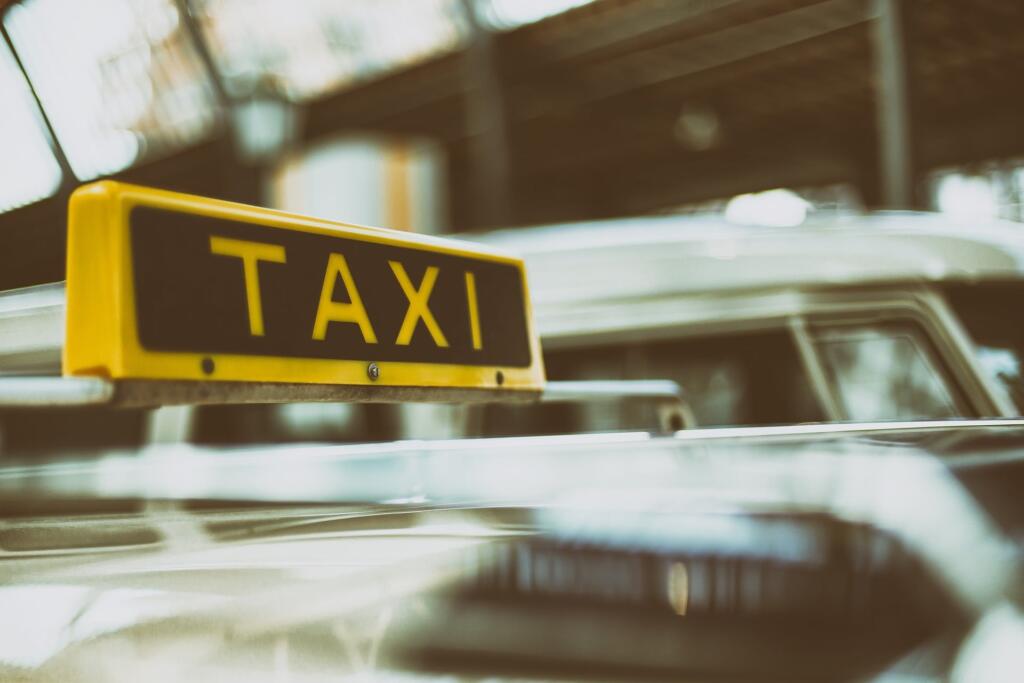
Taxis are an easy and fast way to travel in Mallorca. Unfortunately, taxi-hailing apps like Uber are not available in Mallorca. So, to board a taxi, you can make a call, hail one down, or head to a taxi stand near you. Hotels in Mallorca also order taxis for their clients.
Upon your arrival at the airport, dozens of taxis await passengers to take them to their next destination in Mallorca.
In Palma, taxis are white with a stripe of yellow or red in the middle. When free, the taxi roof lights usually indicate green. Also, taxis charge by meters traveled. So, most taxis usually indicate these meters inside the car to help avoid overcharging.
Taxi charges usually start from EUR 4.95. On top of that, taxi drivers always display their numbers and licenses on the car.
To order a taxi in Palma, call Taxis Palma Radio at +34 971 400 004 or +34 971 401 414. These lines have 24-hour availability.
Other areas in Mallorca also have their taxi companies. Some of these include;
| Taxi Company | Contact |
| Calvia taxis | + 34 971 680 970 + 34 971 134 700 |
| Inca taxis | + 34 971 881 020 |
| Soller taxis | + 34 971 638 020 |
| Alcudia cabs | + 34 971 549 766 + 34 971 549 870 |
Taxis in Mallorca are available both during the day and night. So, you can call a taxi after a late night out or for an early morning drive to the airport.
3. Bicycles
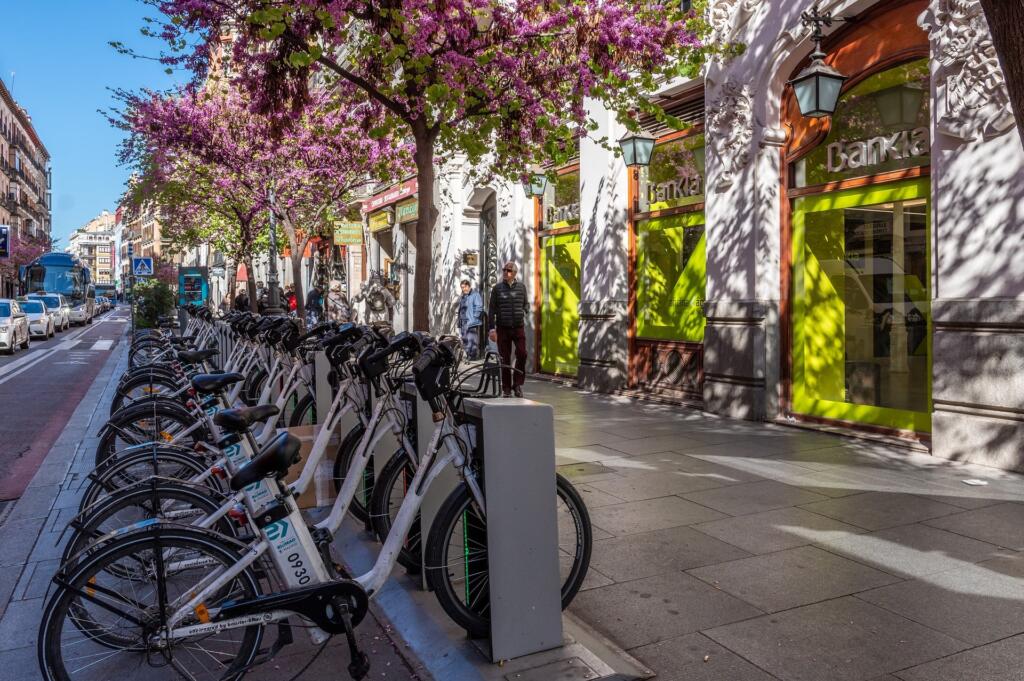
Cycling is popular in Mallorca, and the island has well-developed cycling routes. Also, the city has many cycling clubs that promote it as a sport. During the cooler months, the city is a go-to destination for professional and cycling enthusiasts.
Traveling with a bicycle is super easy. Also, you can rent a bike from plenty of bike parks on the island. Some companies like Mou-te Be and BiciPalma rent bicycles for short periods.
Water transportation
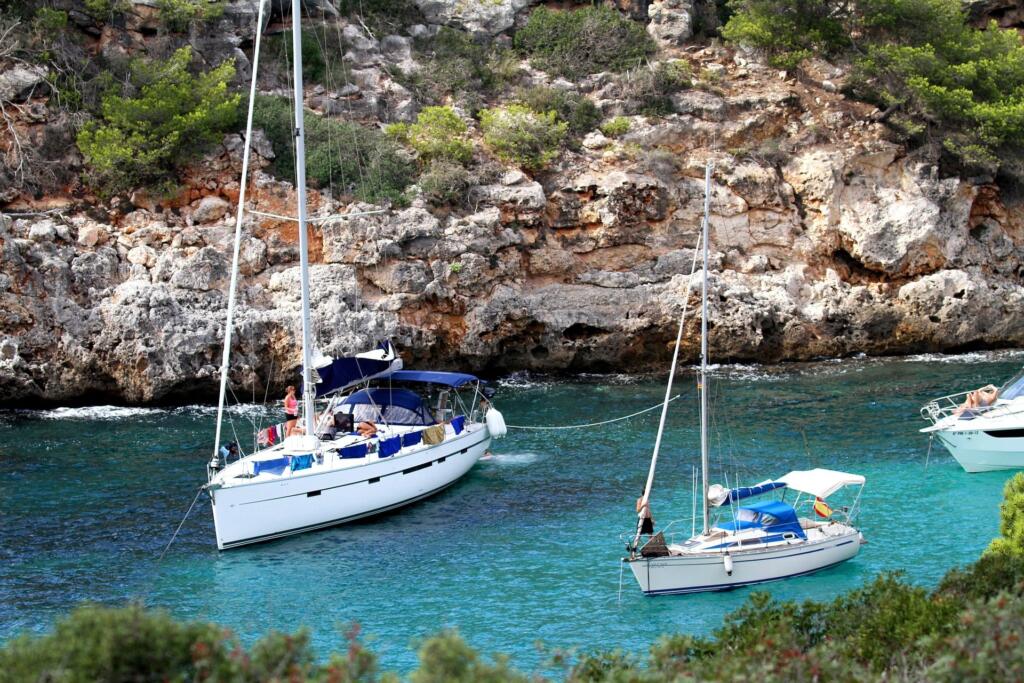
In Mallorca, you can rent a boat and travel by water in the Mediterranean Sea. Many boat renting companies rent their boats with or without a captain at the coast of Mallorca.
Some of these boat rental businesses in Mallorca include:
- La Cala Boat Tours
- Boat Trip Mallorca with Cata Simo
- Vita Bel Yacht Charter
- Marina Tramontana
- Mar Balear Fishing Adventure
Safety
In 2022, data from the Ministry of Interior, Spain, showed that the Balearic Islands had the highest crime rate in the country. This data also showed that there were 64 crimes per every 1,000 inhabitants.
Some major crimes on the islands were theft, vandalism, and assault. According to the same data, the Balearic Islands recorded 24,462 theft cases in 2022, a decrease from 26,500 in 2019.
Despite the Balearic Islands topping in crime rate in Spain, Mallorca remained a top destination for holidaymakers and digital nomads.
In fact, according to a safety survey by Numbeo.com, Palma, the capital of Mallorca, is safer than most famous cities in the world, like New York. The survey shows Palma’s crime and safety indexes average 33.66 and 66.16, respectively. New York, however, averages 49.46 for the crime index and 50.64 for the safety index.
Here is a summary of crime rates in Palma, Spain, according to the Numbeo survey.
| Safety issue | Percentage (%) | Rating |
| Risk of car theft | 37.34 | Low |
| Risk of attack | 28.83 | Low |
| Risk of home breakage and robbery | 31.99 | Low |
| Risk 0f being insulted | 33.33 | Low |
| Corruption and bribery | 50 | Moderate |
| Risk of ethnic, race, gender, and religious discrimination | 20.90 | Low |
| Risk of getting mugged | 29.92 | Low |
| Drug dealing | 51.12 | Moderate |
Additionally, the survey shows the safety rating for walking in Palma during the day as 82.70% and 62% for walking alone at night.
Safety tips while in Mallorca
- Avoid Son Banya, Son Gotleu, and Corea neighborhoods
- Stay alert while in Bust stops, train stations, markets, and public transports
- Don’t leave your bag unattended
- Keep your luggage in your sight always
- Avoid street performers to lower the risk of getting scammed
- Store things in your front pocket for more safety
There is a wide range of cultural aspects in Mallorca. These cultural aspects range from wine tasting to archaeological sites, museums, and art galleries.
1. Museums and art galleries
Mallorca is home to many museums and art galleries. These facilities help promote the culture of Mallorca to visitors and keep them entertained.
These museums and art galleries have a vast collection of art from dedicated artists all over Mallorca and Spain. Some of these artists are Joan Miro and Pablo Picasso.
Other types of art displayed in these spaces include pottery and pearl products.
Some of these museums and art galleries include;
- Casal Solleric, Palma
- CCA Andratx Art Centre, Andratx
- Museum of Juniper Serra Fray, Petra
- Museu Diocesa, Palma
- Museum of Spanish Contemporary Art, Palma
2. Religious buildings
There is a wide range of religious buildings scattered all over Mallorca. These buildings are evidence of the long history of Mallorca. The churches vary from baroque and medieval churches to old sanctuaries and monasteries.
Some of these religious buildings on the island are;
- Ermita de Bonany, Petra
- Puig de Randa and Santuari de Cura, Algaida
- Esglesia de Nostra Senyora dels Dolors, Manacor
- Sanctuary de Sant Salvador, Felanitx
3. Wineries and wine tasting
Wine cultivation and wine-tasting events are popular cultural activities in Mallorca. The well know regions for wine-making in Mallorca are Binissalem, Serra de Tramuntana, and Pla I Llevant.

Due to limited space, winemaking in Mallorca isn’t as big as in mainland Spain. Due to this reason, Majorcans barely sell their wine on the mainland. In fact, the island consumes most of the wine and ships the rest to other European countries.
Also, visitors can immerse themselves in winery tours and wine-tasting experiences. Here are some of the vineyards you can visit for this experience.
- Bodegas Angel Vineyard, Santa Maria del Cami
- Anima Negra Vineyard, Felanitx
- Bodega Biniagual, Binnisalem
4. Festivals
Mallorca hosts many local festivals and concerts annually that are rich in heritage and culture. For instance, before January 17 every year, some villages in Mallorca lit bonfires to commemorate Saint Anthony. On January 17, the villagers take their pets to their local priests for a blessing. Float Palades also take place during this day.
Another popular festival in Mallorca is the Festes del Rei en Jaume, which marks the arrival of Jaime I at Santa Ponca. It also marks the beginning of the reconquest of Mallorca from the Moors 783 years ago.
This festival takes place during the first two weeks of September and includes a varied program for leisure, traditional and cultural events. These events include a night of fire (‘nit de foc’), a giants’ parade, and a battle re-enactment of Christians and Moors.
Other festivals in Mallorca include the following:
- Festa des Vermar (Grape Harvest Festival)
- Ball dels Cossiers
- Corpus Christi
- Festes del Rei en Jaume
- St. Sebastian’s Festival (Festes de Sant Sebastia)
- Sa Rua & Sa Rueta
How to behave in Mallorca
- Dress appropriately. Spaniards, including those in Mallorca, are conservative people. Thus walking in a bikini and a bare chest in the streets isn’t appropriate.
- Feel free to tip while in bars and restaurants. Also, you can tip after receiving any services in Mallorca.
- Learn useful phrases like greetings. For example, Bon dia – good morning, Bona nit – good night. Also, Majorcans use greeting gestures like handshakes for males and kissing on the cheeks, mostly with females.
- Avoid binge drinking while in bars and restaurants.
- Treat everyone with respect.
Political and economic stability in Mallorca
Political nature and government
Mallorca is part of the Balearic Islands, one of the 17 autonomous communities of Spain. This community is autonomous and under the rule of a president. Palma, the capital of Mallorca, is also the capital of the autonomous community of the Balearic Islands. From 2015 to date,2023, the president of this community has been Francina Armengol.
Created in 1978, the Insular Council of Mallorca (Consell Insular de Mallorca) is Mallorca’s governing institution. This institution is responsible for municipal administration, culture, railways, and roads in Mallorca. This body is under the rule of a president, Catalina Cladera, as of 2023.
So far, Mallorca has experienced a stable political atmosphere.
Economic Stability
Mallorca’s main economic sector is tourism. Since the 1950s, the island has steadily become a popular tourist attraction in Spain.
As stated above, the Balearic Islands received 16,475,579 tourists in 2022. Compared to 2019, the pre-pandemic period, these tourists were 397 fewer and 76,000 lower than in 2018.
Other major economic sectors in Mallorca are food and drinking services, accommodation, real estate, construction, and manufacturing.
According to theolivepress.es, a news outlet, the estimated growth for Mallorca’s economy in 2022 was 14.2%, 0.9% higher than the prediction. As a result, Mallorca ranked first for the highest economic growth in the Balearic.
Also, according to the source, service industries, like tourism and hospitality, in the Balearics reported a 16.4% growth in 2022. This growth contributed to a 2.2% increase in the Gross Domestic Product (GDP) of the Balearics since 2019.
Balearic Islands exports also hit a new milestone in 2022. According to Majorca Daily Bulletin, 2022 export figures by the National Ministry of Industry, Trade, and Tourism were EUR 2,604 million. Compared to 2019, the pre-pandemic period, the export value grew by 41%, from EUR 1,842 million. Germany, Italy, and France were the top three markets for these exports.
On top of that, Balearics imports also hit a new milestone in 2022. These imports accrued to EUR 2,256 million, EUR 461 million more than the previous highest in 2018.
Language and language barriers
Mallorca has two official languages, Catalan and Castilian Spanish. However, the Catalan language on the island is a local dialect known as Mallorqui. The Catalan language has different local variants in most villages of Mallorca and the whole of Spain. Usually, education on the island happens in both Spanish and Catalan, with few instances of English.
According to a survey by INE (National Institute of Statistics), English is the third most widely spoken language in the Balearic Islands. This survey showed that Balearic has more than 50,000 English speakers that speak neither Spanish nor Catalan. This survey also showed that 28,477 people spoke English with family, 18,332 others spoke it with friends, and 33,473 spoke the language in their workplaces.
Another dominant language in the Islands, according to the survey, is Arabic. The survey showed that 14,258 speakers spoke Arabic at home, 10,577 others spoke it with friends, and 8,132 spoke it in the workplace.
Healthcare in Mallorca
There are several public and private health centers in Mallorca. These facilities offer quality health care with the latest technologies. Even better, the Spanish government offers free state healthcare to its citizens. However, accessing this free state healthcare from the Balearics might be difficult.

Accessing public healthcare in Spain requires a TSI (Targeta Sanitaria Individual) healthcare card. To apply for the TSI card, you need to register your address on Padron, an official list of people residing in the municipality at the nearby town hall. On top of the Padron registration, you also need a Spanish social security number.
As an ex-pat, besides the TSI card, you also need a certificate of registration (empadronamiento) and NIE number to access this public healthcare.
EU, EEA, and Swiss nationals require the European Health Insurance Card (EHIC) to access healthcare in Mallorca, Spain. Since UK nationals no longer apply for the EHIC, having the GHIC (Global Health Insurance Card) is necessary.
Besides public healthcare, you can opt for the private healthcare system, which is less crowded and remarkably fast. About 25% of Spaniards opt for private healthcare coverage. Also, most ex-pats prefer this type of healthcare.
Usually, depending on the coverage plans, private health insurance costs from EUR 50 to EUR 200 monthly.
Some of the popular private health insurance types in Spain are:
Hospitals
Some of the best private and public hospitals in Mallorca are;
- Hospital Joan March
- Hospital Juaneda Muro
- Policlinica Miramar
- Hospital Sant Joan de Deu
- Hospital Universitari Son Espases
- Son Llatzer Hospital
- Palma clinic
Vaccination
Before entering Spain, visitors should follow the necessary vaccination requirements recommended by CDC (Centers for Disease Control and Prevention) and WHO (World Health Organization).
Vaccinations necessary while traveling to Spain are;
- Measles
- Hepatitis A
- Hepatitis B
- Polio
- Meningitis
- Pneumonia
- Chicken Pox
- Influenza
- Tdap (Tetanus, Diphtheria, and Pertussis)
- Shingle
- Rubella
- Rabies
- Coivid-19
Electronic standards
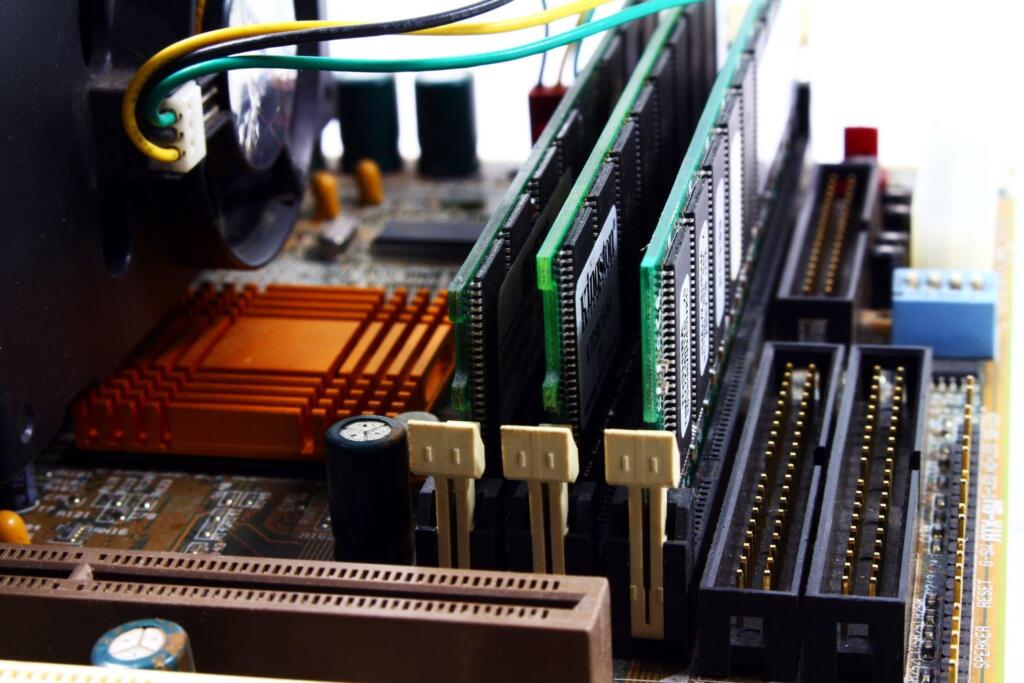
The standard power supply in Spain is 230V with a frequency of 50Hz. Also, the standard socket plugs in Spain are type C and type F. Type C socket plug has two round pins, while type F has two round pins with earth clips on the opposite sides.
Spain operates on GSM (Global System for Mobile Communication). However, ex-pats from countries operating on CDMA (Code Division Multiple Access) might find operating their phones in Spain difficult.
Telephone and Internet plans

The major mobile networks in Spain are;
Opensignal, a private body that analyses mobile experiences worldwide, released its findings on Spanish mobile networks in 2022. These findings showed the following;
- Movistar ranked first for the best mobile speeds overall. According to the findings, Movistar’s download speed averaged 35.4 Mbps, while the upload speed averaged 11.2 Mbps.
- Movistar also provided the best video experience. It ranked first with 56.1 points out of 100.
- Movistar topped for the best consistent mobile experience. Interestingly, this was the second time in a row that the mobile network took the lead for the best consistent mobile experience.
- Movistar, Orange, and Yoigo tied for best 5G reach and availability. Subscribers for these mobile networks spent much of their time connected to 5G.
- Orange, Vodafone, and Yoigo had the best availability. These networks tied at 98.2% and 98.3% points. This shows subscribers to these networks spent the most time connected to their network providers.
Payment service and infrastructure

Spain has been on the front line of embracing digital payment methods. According to a 2020 Bank of Spain report, 54.1% of Spain’s population preferred debit card payments, while 35.9% opted for cash payments. Bank of Spain also stated that cash payments have shown a consistent downward trend since 2014.
Also, according to the report, 64.8% of businesses preferred debit card payments. However, only 26.4% of small businesses opted for cash payments, a 0.8% decrease from 2019.
Another 2021 report by Statista showed that over 50% of e-commerce customers in Spain preferred debit card payments, while 40% opted for other digital payment methods such as PayPal. The Statista report also stated that 47% of retail transactions were in cash.
Popular local and international payment methods in Spain include the following;
- Debit and credit cards – Popular cards are Mastercard and Visa
- Digital wallets – Popular examples include Bizum, Apple Pay, Amazon Pay, Google Pay, PayPal, Click to Pay, SEPA Direct Debit, Multibanco
- Bank transfers – Top contenders are Trustly and Sofort
- (BNPL) Buy Now, Pay Later – Popular examples are Klarna and Clearpay
Currencies and exchange rate
Euro is the official currency of Spain. As of April 16, 2023, EUR 1 equals USD 1.11.
Climate and Seasons
The Majorcan climate is one of the main reasons the island is a go-to destination in Spain for foreigners worldwide. The island experience an average of 300 days of sunshine annually.
Most visitors flock to the island during the summer to enjoy the coves and beaches. Meanwhile, others travel to the island in autumn, winter, and spring for outdoor sports and to visit attraction sites.
Typically, the climate of Mallorca is Mediterranean, characterized by hot summers and mild winters. The island is also quite windy, especially from October to April. The cool sea breezes from the sea make summer seasons more comfortable and easier to cope with.
According to data from climatetotravel.com, Mallorca experiences hot and sunny weather during summer, from June to mid-September, with few thundershowers. During this season, temperatures can rise to 37°C (99°F). However, in June 2001, the temperature rose to 41.5°C (106.5°F). However, nights are cold.
During winter, from December to February, the weather is mild, with many sunny days. Also, the season has some windy and rainy periods. Nights can get cold, and temperatures can drop to freezing point.
Springs are sunny, especially in May. In autumn, however, sunny periods are not a guarantee.
Moreover, this source also states that Mallorca receives an average sunshine duration of 2,750 hours annually.
Based on data from the same source, here is an annual summary of Mallorca’s climate.
January
It’s the coldest month of the year in Mallorca, with temperatures averaging 9.9°C (50°F). The average minimum temperature sits at 4.3°C (39.8 °F) and with an average maximum temperature of 15.5°C (59.9°F). Usually, the temperature during the night drops to around -1°C (30°F).
During this month, daytime lasts an average of 9 hours and 40 minutes, while sunshine duration averages 5.5 hours.
Sea temperatures are also low, averaging 14°C (57°F), thus unfavorable for swimming and other recreational water activities.
February
The weather is mild, with an average daily temperature of 10°C (50°F). The monthly average minimum temperature is 4.3°C (39.7°F), and 15.6°C (60.1°F) is the average maximum temperature. However, 1°C (30°F) is the average night temperature, although it can drop even lower.
Daytime lasts an average of 10 hours and 40 minutes, with an average sunshine duration of 6 hours. Also, the sea temperatures remain low, about 14°C (57°F), thus unfavorable for swimming.
March
The weather is still mild, although with a slight increase in temperature. Daily temperature averages 11.8 °C (53°F). However, the minimum average temperature sits at 5.8 °C (42.5°F) while the maximum temperature averages 17.8°C (64.1°F).
The coldest nights usually occur at the beginning of the month. However, the temperature usually drops to 0°C (32°F) at night.
Daytime increases to 12 hours on average, with a sunshine duration of 6.5 hours. Sea temperatures still average 14°C (57°F), thus not the best for recreational activities.
April
Temperatures continue to increase, averaging 14.3°C (58°F). The minimum and maximum temperature averages 8.2°C (46.8°F) and 20.4°C (68.7°F), respectively. Night temperature averages 2.5°C(36.5°F), although lower during the beginning of the month.
Daytime is long and lasts for 13 hours and 20 min on average, with an average sunshine exposure of 8 hours. Sea temperatures remain low, averaging 15 °C (59°F).
May
The weather remains mild, with a slight increase in average temperature, 18°C (64°F). The minimum temperature averages 11.8°C (53.3°F) while the maximum temperature averages 24.2°C (75.6°F). At night, the temperature drops to around 7°C (44°F), although in May 2001, it dropped to 3.4°C (38.1°F).
Usually, daytime lasts 14 hours and 25 minutes, with an average sunshine exposure of 9 hours. The average sea temperatures increase slightly to around 17°C (62.5°F).
June
This month marks the start of summer in Mallorca, Spain. Usually, the weather is warm, with an average temperature of 22.2°C (72°F). Minimum daily temperature averages 15.9°C (60.7°F), while the maximum temperature averages 28.5°C (83.3°F). Nights are cold and average 11.5°C (60.7°F).
On average, daytime lasts 14 hours and 55 minutes, with an average sunshine exposure of 10.5 hours.
Sea temperatures also increase to an average of 21°C (70°F), thus favorable for swimming and other recreational activities.
July
The weather is warm, with an average temperature of 25.1°C (77°C). The minimum temperature averages 18.8°C (65.9°F) while the maximum temperature averages 31.4°C (88.6°F). Nights are cold and average 14.5°C (58.5°F).
Also, the days are long and can last 14 hours and 35 minutes on average. This results in long sunshine duration that average 11 hours daily.
Sea temperatures are warm and average 24°C (75°F), enough for recreational water activities.
August
This is the hottest month, with temperatures averaging 25.61°C (78°F). On average, the month records a minimum temperature of 19.61°C (67.21°F) and a maximum temperature of 31.61°C (88.91°F). At night, temperatures usually average 15. 5°C (60°F). It can also drop lower, although rare.
Daytime lasts an average of 13 hours and 35 minutes, with an average of 10 hours of sunshine. Sea temperatures average 26°C (79°F) and are still warm for swimming and other recreational activities.
September
This month marks the end of the summer season in Mallorca, Spain. The weather is warm and averages 22.4°C (72°F). The minimum temperature averages 16.8°C (62.3°F), and while maximum temperature averages 28°C (82.5°F). Night temperature averages 11.5°C (52.5°F), although with a slight drop at the end of the month.
On average, days last 12 hours and 25 minutes, with an average sunshine duration of 7.5 hours. Sea temperatures average 22°C (71.5°F) and are still warm for recreational activities.
October
It’s autumn, and the weather in Mallorca is warm, with temperatures averaging 18.7°C (66°F). The monthly minimum temperature averages 13.4°C (56°F) while the maximum temperature averages 24.1°C (75.4°F). At night, the temperature drops to an average of 7.5°C (45.5°F).
Days last an average of 11 hours and 5 minutes, with a mean sunshine duration of 6.5 hours. The sea temperature averages 22°C (71.5°F) and is still warm for fun activities.
November
The weather is mild, and the temperature continues to fall to an average of 14°C (57°F). Minimum temperatures during the month average 8.8°C (47.8°F), while the maximum temperatures average 19.2°C (66.6°F). Nights are cold, and temperatures normally drop to about 3°C (37.5°F).
Days are short and average 10 hours, with about 5.5 hours of sunshine. Sea temperatures average 18°C (64.5°F), therefore cold for swimming.
December
The weather is still mild, with temperatures averaging 11°C (52°F). Minimum and maximum monthly temperatures average 5.8°C (42.4°F) and 16.5°C (61.6°F), respectively. Temperatures usually drop to 0°C (32°F) during the coldest nights of the month.
The days are even shorter, averaging 9 hours and 25 mins daily with an average sunshine exposure of 5 hours. Sea temperatures fall even lower, averaging 16°C (61°F), thus still cold for swimming and other activities.
Cuisines in Mallorca
Some of the common local cuisines in Mallorca include:
1. Arros Brut (Rice stew)
Almost every region in Spain has a typical rice cuisine. Arros brut in Mallorqui means ‘dirty rice,’ although nothing is dirty about the dish. This dish includes vegetables, meat, and rice drenched in a stew.
It also combines several spices like cinnamon, clover, saffron, nutmeg, paprika, and pepper.
The ingredients change with the seasons. For instance, meat can change from chicken to pork, game to snails to rabbit.
2. Frit Mallorqui
This is a traditional dish of vegetables and offal. Usually, the Majorcans make this dish during “Matanca.” Matanca is an event comprising the whole family or village that gathers to slaughter a pig and eat together.
Some ingredients included in the traditional recipe for this dish are onions, tomatoes, onions, olive oil, garlic, pepper, and spices. These ingredients are then fried with lungs, liver, and blood.
3. Lechona Asada
Majorcans usually eat this dish during Christmas.
The dish comprises piglet meat marinated for 24 hours with garlic, brandy or wine, thyme, rosemary, pepper, salt, lemon, and bay leaf to make it tasty and tender.
Afterward, the meat cooks in the oven, resulting in a lump of delicious and juicy meat.
4. Llom amb Col
This is a dish made with cabbage and pork. Basically, “Llom lamb col” means loins with cabbage.
This dish combines sobrassada, botifarro, and little pork loins covered with cabbage leaves. This mixture is then cooked with raisins, pine nuts, wine, and tomatoes. Traditionally Majorcans cooked the dish in a clay pot.
5. Tumbet
This is a vegetable stew eaten as the main meal or with a side meal.
The recipe of this cuisine combines potatoes, tomatoes, fried laminated aubergines, olive oil, zucchini, and garlic.
Also, it has a Mediterranean characteristic compared to similar dishes like ratatouille from France and samfaina from Valencia and Cataluña. Thanks to its distinctive vegetable ingredients, it is a great choice for vegetarians touring Mallorca.
Other delicious cuisines to try out in Mallorca are trampo, tapas, Sopas mallorquinas, rubiols, panades, llonguet, coca de cuarto, ensaimada and bunyols.
Tax requirements on digital nomads
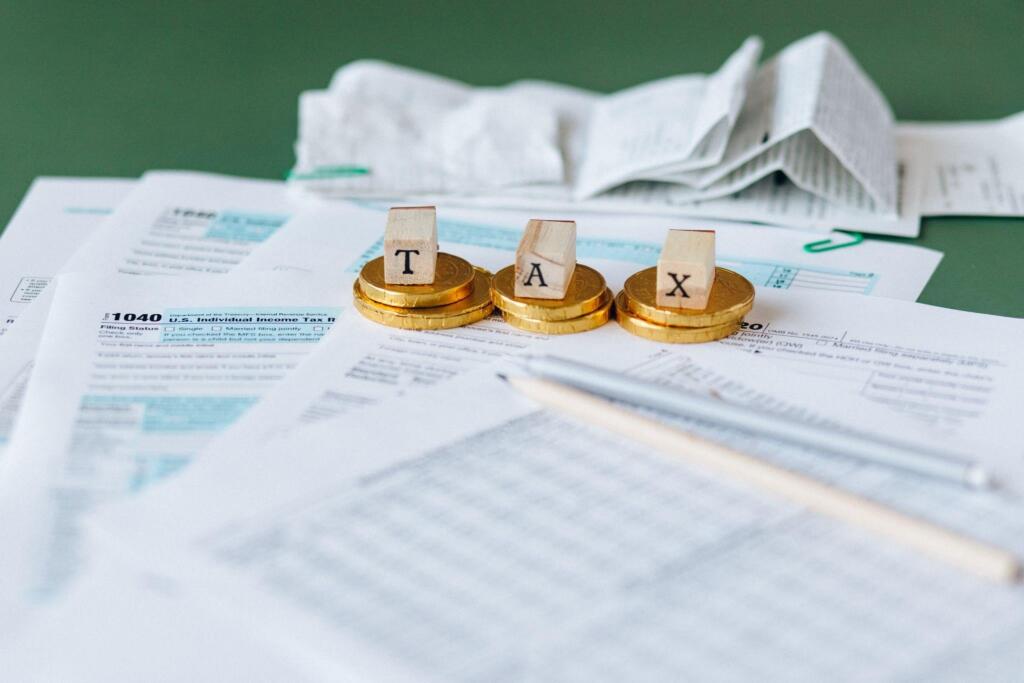
If you have a digital nomad visa, you only need to pay tax for Spanish income (income generated from working for Spanish organizations). Usually, the tax rate for this Spanish income amounts to 24% of income up to EUR 600,000 and 40% for a higher income.
Also, digital nomads owning properties in Mallorca, Spain, need to submit tax returns. Based on data from realista.com, a company specializing in Spanish properties, these tax rates range from 8% to 11.5% for all properties.
Common concerns about Mallorca
Some of the common concerns for ex-pats about Mallorca are:
- The island, primarily beaches, is usually deserted during the winter
- Buying property on the island can be difficult
- It’s hard to make long-term friends on the island because of its seasonality
- Finding parking space isn’t easy in Palma
- The island experiences over-tourism during the summers
- Administrative procedures are long and complex
Always check with local country websites for the most up to date visa, health, tax and travel requirements before entering a country. This article is general information and does not constitute legal advice, check with a legal professional for visas, working visas, applicable tax and crypto laws specific to you.

